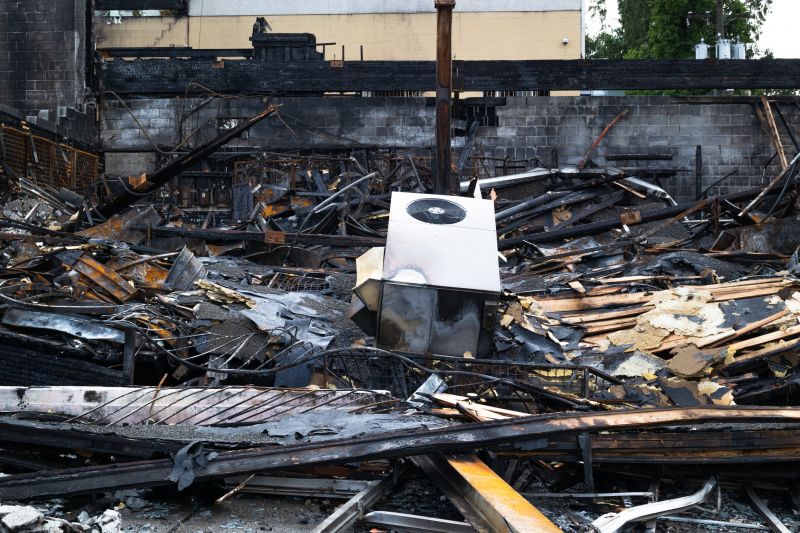Favorite Fire Restoration Tools For Rapid Property Recovery
Choose from trusted products that streamline the restoration process and help you restore properties promptly.
 Fire restoration products are essential tools and materials used to address the aftermath of a fire incident, helping to restore safety and integrity to affected structures. These products encompass a wide range of solutions designed to remove smoke and soot residues, neutralize odors, and repair or replace damaged materials. Proper selection and application of these products can significantly improve the efficiency of the restoration process and ensure a safer environment for occupants and workers alike.
Fire restoration products are essential tools and materials used to address the aftermath of a fire incident, helping to restore safety and integrity to affected structures. These products encompass a wide range of solutions designed to remove smoke and soot residues, neutralize odors, and repair or replace damaged materials. Proper selection and application of these products can significantly improve the efficiency of the restoration process and ensure a safer environment for occupants and workers alike.
Top Overall Option
Comprehensive Fire Damage Restoration Kit
A versatile and all-in-one solution that includes cleaning agents, odor neutralizers, and repair materials designed for various stages of fire restoration. This kit offers a practical approach to addressing soot, smoke, and structural damage efficiently, making it suitable for both professionals and DIY restorers.
Types of Products For Fire Restorations
Soot and Smoke Cleaners
Specialized solutions formulated to remove soot and smoke residues from surfaces, fabrics, and furnishings.
Odor Neutralizers
Products designed to eliminate persistent smoke odors from indoor environments.
Fire-Resistant Drywall and Insulation
Materials that provide enhanced fire resistance to structural elements during restoration.
Fire Retardant Paints and Coatings
Protective coatings that slow the spread of fire on surfaces and materials.
Air Scrubbers and HEPA Filters
Equipment used to purify the air by removing airborne soot, smoke particles, and odors.
Structural Repair Kits
Complete sets of tools and materials for repairing walls, ceilings, and floors damaged by fire.
Sealants and Caulks
Products used to seal cracks and joints to prevent smoke infiltration and improve safety.
Electrical Repair Components
Replacement parts and kits for restoring electrical systems affected by fire damage.
Fire-Resistant Doors and Windows
Installations designed to improve fire containment and safety.
Fireproofing Sprays
Sprays that provide an additional layer of fire resistance on various surfaces.
Cleaning Brushes and Equipment
Tools essential for effective cleaning of soot and smoke residues.
Protective Gear
Safety equipment such as masks, gloves, and suits for workers handling fire restoration products.
Popular Choices
Widely used to combat persistent smoke smells in residential and commercial spaces.
Effective in cleaning soot from various surfaces during restoration projects.
Popular for creating fire barriers and sealing cracks in damaged structures.
Commonly employed to improve indoor air quality after a fire incident.
Used for localized odor control in affected areas.
Chosen for their ability to withstand heat and prevent fire spread.
Popular for coating surfaces to enhance safety measures.
Effective in removing airborne particles during cleanup.
Favored for their comprehensive approach to rebuilding damaged areas.
Applied to various surfaces to improve fire resistance.
Essential tools for thorough soot and residue removal.
Commonly used by workers to ensure safety during restoration activities.
Effective fire restoration begins with thorough assessment and cleaning. Specialized cleaning agents and degreasers are used to break down soot and smoke residues that cling to surfaces, including walls, ceilings, and furniture. These products often contain surfactants and solvents formulated to loosen stubborn residues without damaging underlying materials. Once cleaning is complete, odor neutralizers and air scrubbers can be employed to eliminate lingering smells that traditional cleaning methods might not fully address.
In addition to cleaning and deodorizing, repair and replacement products play a critical role in restoring fire-damaged properties. These include fire-resistant drywall, insulation, and sealants that help rebuild structural integrity. Fire-retardant paints and coatings can be applied to surfaces to reduce the risk of future fire spread, providing an added layer of safety. For electrical components or wiring that has been compromised, specialized repair kits and replacement parts are available to ensure compliance with safety standards.
Choosing the right products for fire restoration depends on the extent of damage, the materials involved, and the specific needs of the property. Proper training and adherence to safety guidelines are essential when handling chemical-based products. Investing in quality, versatile solutions can streamline the restoration process, reduce costs, and promote a safer, healthier environment for everyone involved.
Key Buying Considerations
- Assess the extent of fire and smoke damage to determine appropriate products.
- Ensure compatibility of cleaning agents with different materials and surfaces.
- Select products with proven efficacy in odor neutralization and soot removal.
- Prioritize fire-resistant and fire-retardant materials for structural safety.
- Consider the size and capacity of air purification systems for the affected space.
- Check for safety data sheets and proper handling instructions for chemical products.
- Opt for versatile products that can address multiple restoration needs.
- Evaluate the ease of application and user-friendliness of repair kits and coatings.
- Verify that electrical repair components meet safety standards and codes.
- Determine the level of fire resistance required for specific structural elements.
- Balance cost with quality to ensure effective and durable restoration results.
- Look for products with positive reviews and recommendations from industry professionals.
- Consider environmental conditions, such as humidity and temperature, during application.
- Ensure availability of replacement parts and ongoing support for chosen products.
- Be aware of local building codes and regulations related to fire safety and restoration.
